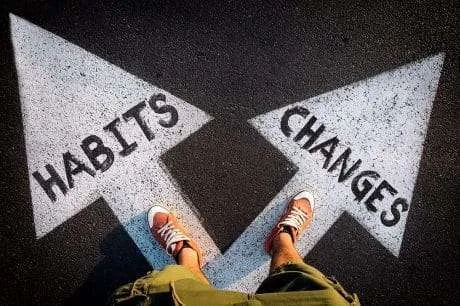The snow has melted, people are getting vaccinated, the weather is heating up and everyone is ready to get back to normal. Whether you picked up a few healthy new behaviors over the last year, or are looking to make a fresh start, we’ve got the tips and tricks you need to help turn new behaviors into healthy habits that last.
According to the European Journal of Social Psychology, it can take anywhere from 18 to 254 days for a person to form a new habit and an average of 66 days for a new behavior to become automatic. Why is there such a big gap? It depends on the unique person and the unique habit they’re trying to create.
Three ways to create healthy habits
As it turns out, emotion is the secret to forming new habits—not repetition, willpower or discipline. According to B.J. Fogg, Founder of Stanford’s Behavior Design Lab and author of “Tiny Habits: The Small Changes that Change Everything,” the key to building a better habit is tying each new action to something you already enjoy doing, like stretching while watching a beautiful sunrise.
Let’s take a look at Fogg’s three criteria for creating healthy new habits that last:
- It must be effective
In order for new behaviors to take hold and become healthy habits, it has to be successful in creating the desired or intended result. For example, when you want to relieve stress, you’ve got to do something that helps you alleviate feelings of stress and promotes positive feelings, or you will not continue the behaviors. For some that might be yoga or meditation, while for others it might be running or cycling. - It must be something you want to do
While you can likely force yourself to do a healthy activity for a while, it won’t become a habit if you don’t enjoy it. Find a go-to solution that’s both effective and enjoyable. - It must be realistic
If your favorite activity is running on the beach, but you don’t live close enough the beach to go regularly, it will be impossible to make this particular activity a habit. Instead, you might want to invest in a treadmill or join a local running club that does weekly or monthly excursions to a nearby beach.
A key to transforming a smaller behaviors into habits is to design it into your established routine, which means determining what will that new action come after naturally. For example, let’s say you want to drink more water each day. Most everyone has an established routine, so pay attention to where you could most naturally add a glass of water. Fogg suggests tying it to another similar daily action, like making coffee. Pour a glass of water and drink it while you wait for your coffee maker to heat up and brew your morning pick-me-up. When you tie the location, frequency and theme together, your new habit can more easily click into place.
For more information about improving your life through healthy habits and smart lifestyle changes, call Jason Ferine Physical Therapy at 424-365-2083. We are a boutique physical therapy practice and fitness studio that’s dedicated to your overall health, fitness and wellness.



